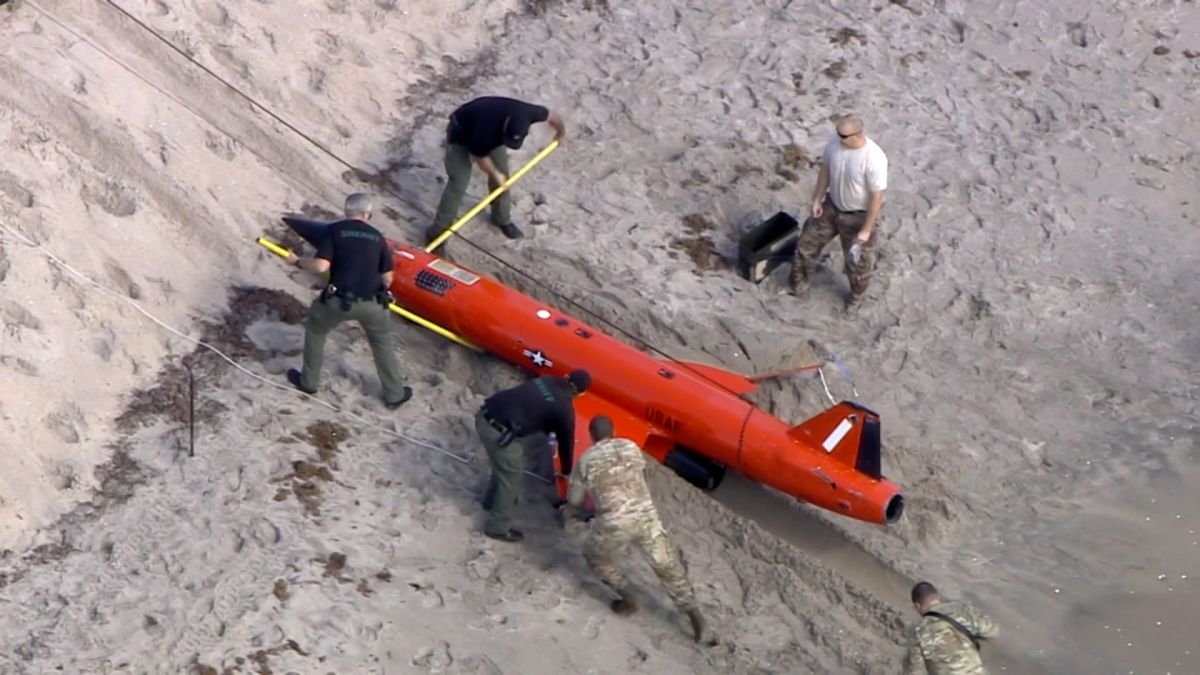An Air Force training drone washed ashore on a Florida beach

Beachcombers in southeast Florida got a surprise last week when the tide brought forth a 20-foot aerial target drone used by the US Air Force.
The drone, part of the Air Force’s weapons system evaluation program, was found on Friday on the shore of Boynton Beach in southeast Florida’s Palm Beach County. It was quickly recovered by the Air Force and never posed a threat to the public.
Lt. Savannah Bray, spokeswoman for the US Air Force’s 53rd Wing, told CNN that the BQM-167A drone is a subscale target drone used specifically for training exercises throughout the entire military. The drones are used to test weapons systems and train fighter pilots during live-fire exercises.
“They are flown remotely, and they simulate a real air-to-air combat mission,” said Bray, adding that shooting down one of these drones would be like firing at an enemy aircraft.
Air Force officials were called to Boynton Beach and the drone was removed within a few hours. Bray estimated that the BQM-167A found was likely shot down during a training exercise that occurred two to three sessions ago. The Air Force’s 53rd Wing conducts training exercises year round, with one held roughly every month.
The Air Force recovers the drones, either by boat rescues or through a parachute recovery system, as the drones can be repaired, tested and reused, according to the Air Force.
The 82nd Aerial Targets Squadron operates and maintains the drones at Tyndall Air Force Base located 12 miles east of Panama City on the Florida Panhandle. The squadron maintains three 120-foot drone recovery vessels and four smaller patrol boats, the only vessels in the Air Force, to recover the drones and support range safety.
However, Bray said it’s not uncommon for theses drones to be found by local law enforcement or civilians when the Air Force can’t reach them.
“Every now and then something happens, waves or weather, that our boats are unable to navigate towards (the drones),” Bray said.
The BQM-167A went into use in 2007. It is capable of speeds up to 0.92 Mach, according to the Air Force. The drone can achieve flight altitudes of 50,000 feet and is launched via a rail system using a rocket-assisted takeoff.
All practice drones have a phone number printed on them that directs local law enforcement or civilians who come across it to call Tyndall Air Force Base, Bray said. From there, airmen will come safely recover the drone.
Bray emphasized that drones like the BQM-167A found in Florida are not dangerous and don’t pose a threat to the public. “In no way, shape or form was it anything that was a weapon or ever posed a dangerous situation,” she said.